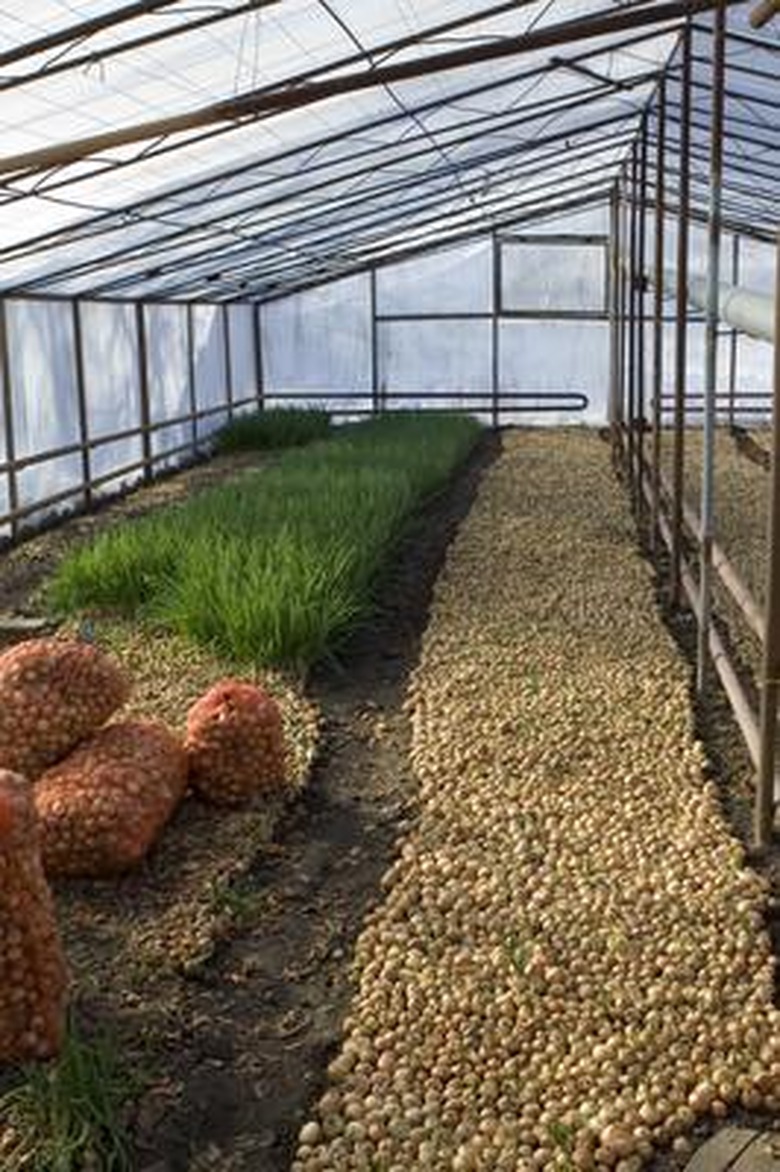How To Prune A Calathea
Encompassing about 300 flashy, exotic species, calatheas (Calathea spp.) have earned colorful nicknames such as peacock plant, rattlesnake plant and zebra plant. Thriving only in U.S. Department of Agriculture plant hardiness zones 11 and 12, these true tropical jungle natives are fussbudgets that don't grow well in most outdoor gardening conditions. Calatheas tend to be cranky indoors as well, and sometimes need pruning when their growing conditions aren't right. These finicky plants respond by pouting — displaying their annoyance with dead leaf edges, and yellow or dying foliage that requires trimming. When you find out why your calathea is mad, you can kiss, make up and reduce the need for future prunings.
Step 1
Step 1
Prune out spent blooms and dead, dying or damaged leaves as they occur. Use clean, sharp scissors to snip the stalks off at soil level. It's normal for calatheas to shed older outer leaves occasionally. But if yellowing, dying leaves appear frequently or closer to the interior of the plant, it's trying to tell you something. Recurrent yellowing indicates a problem with temperature, lighting, watering or fertilizing.
- Encompassing about 300 flashy, exotic species, calatheas (Calathea spp.)
- Calatheas tend to be cranky indoors as well, and sometimes need pruning when their growing conditions aren't right.
Step 2
Step 2
Trim browning edges from calathea leaves with scissors. This condition is common in these sensitive plants and makes them look shabby, but hints to you that something isn't right. Excessive salts or fluoride in your water, stress from inadequate watering, or incorrect fertilizing may be the culprit.
Step 3
Step 3
Disinfect the scissors before and after use to prevent spreading bacteria and other harmful microorganisms. Scour the tool with hot soapy water to remove dirt and debris. Immerse it in a solution of 9 parts water and 1 part bleach, and allow it to soak for 10 to 15 minutes. Rinse the scissors with warm water. Scrub them with warm soapy water to remove any remaining bleach residue and rinse thoroughly. Lay them out to air dry for about 24 hours, in direct sunlight if possible.
- Trim browning edges from calathea leaves with scissors.
- Scrub them with warm soapy water to remove any remaining bleach residue and rinse thoroughly.
Tip
Keep the calathea in a warm room above 60 degrees Fahrenheit. Give it filtered or indirect light with no sun exposure.
Tip
Evenly moisten the soil surface with distilled water or rainwater when the top 2 to 3 inches of soil is dry. Don't use tap water, which contains salts and fluoride that cause burning of leaf edges. Don't wet the soil to the point of sogginess. Droopy foliage indicates over-watering. Don't allow the calathea to dry out completely or wilt.
Tip
Set the pot on a saucer of wet pebbles, and mist the plant daily to provide necessary humidity.
Tip
Dissolve 1 tablespoon of water soluble 10-30-10 fertilizer with minor elements in 1 gallon of water. Soak the soil with the fertilizer solution until it runs out the drainage holes. Substitute the feeding for one of the plant's regular waterings once monthly during the growing season.
Things Needed
- Clean, sharp scissors
- Bleach
- Dish soap
References
- Missouri Botanical Garden: Calathea makoyana
- Logee's: Cultural Information — Calathea
- National Gardening Association: Indoor Houseplants in Bad Shape
- Tropical Exotics; Horace F. Clay and James C. Hubbard
- Calyx Flowers: Calathea
- Green Patio: Calathea
- Philadelphia County Master Gardeners: Why Sanitize? Spring Cleaning Your Containers
